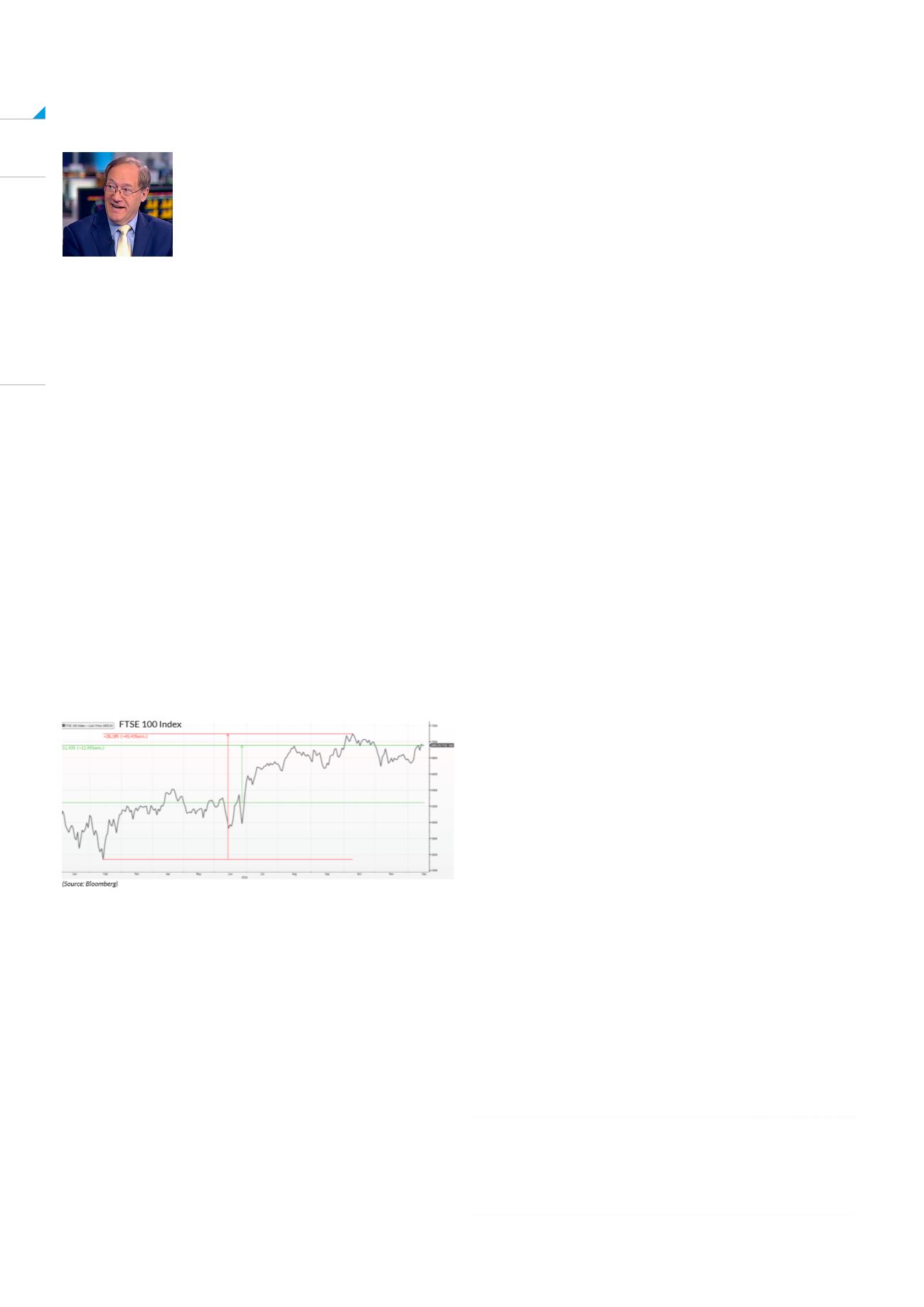
DIY Investor Magazine
/
Jan 2017
28
SHAKEN & STIRRED: 2016 WAS TRICKY FOR BONDS & EQUITIES -
WILL THE ‘TRUMP EFFECT’ CREATE A CASINO ROYALE IN 2017?
Mike Franklin,
Chief Investment Officer
Beaufort Securities
Donald John Trump is to be inaugurated as the 45th
President of the United States on 20th January and
the world feels a very different place from a year ago –
writes Mike Franklin, Beaufort Secuities.
With Brexit and the US Presidential Election, history may
record 2016 as a year of peculiarly ‘left field’ events’; it
was the ‘year of two halves’ we predicted, with the date
of the United Kingdom’s EU Referendum not revealed
by David Cameron until late-February, marking the
midpoint in late-June 2016.
After generally optimistic forecasts for the markets in
2016, a reality check came in the form of short, sharp,
equity market sell-offs in mid-January (-10%) and mid-
February (-12%) on the back of a 25% drop in the price
of crude oil to the $27 per barrel level.
In the event, this was the cathartic end to the downtrend
in the oil price since June 2014. While these sell-offs
undermined start-to-end year forecasts for 2016, they
provided ideal conditions for timed investments.
FTSE 100 index ended the year at a record high of 7142
– up 14.4% - but the low-to-high has been almost 30%
and the moves in several of the constituent stocks have
been even greater.
The performance range of the FTSE 100 Index stocks
has been plus 294% (miner Anglo American) to minus
62% (services provider Capita) while that for FTSE 350
Index constituents has been plus 398% (Peruvian gold
and silver miner Hochschild) to minus 56% (technology
solutions provider Laird).
The year’s most significant challenge was the sharp
drop in the value of Sterling on the 24th June; against
the US$, the pound fell 11% from $1.49 to the $1.32 level
and now stands 16% lower at $1.25.
Perversely, after its initial 9% ‘shock reaction’ drop, the
FTSE 100 Index rallied strongly, fuelled by the fact that
around 70% of the index revenues are derived from
non-Sterling sources – a classic example of ‘bad’ news
being ‘good’ news – depending, on the currency of your
investment exposure.
Bonds have had a roller coaster year; US bond prices
began to fall from July on the prospect of higher
interest rates from the Federal Reserve later in the year,
subsequently compounded since Trump’s election
victory as fears of inflation increased.
Sterling’s sharp fall will lead to a rise in import costs and
higher UK inflation in the coming months; BoE forecast
for CPI was a rise from an estimated 1.3% at end-2016
to 2.7% by end-2017. This has had some impact on
UK Bond prices but a rise in UK interest rates is not
generally regarded as likely during 2017.
‘a rise in UK interest rates is not generally regarded
as likely during 2017’
Lower bond prices has caused adjustment in
traditionally higher-yielding equities such as utility
shares; ‘high yield’ equity portfolios, favoured by longer
term investors in turbulent times, have seen some
price deterioration, but if dividends can be maintained,
investors could afford to be patient for share prices to
recover.
BREXIT CREATES THE PROSPECT OF FUNDAMENTAL
CHANGE, NOT JUST FOR THE UK.


